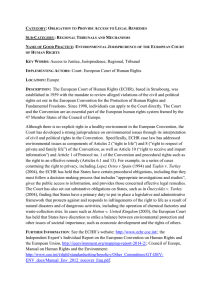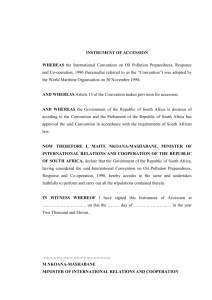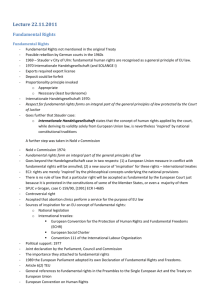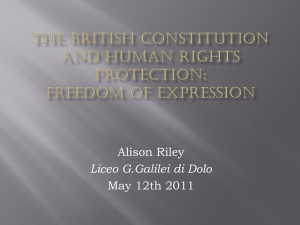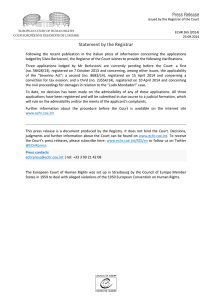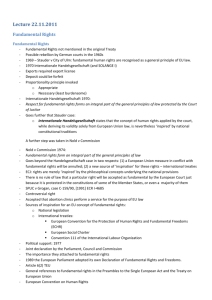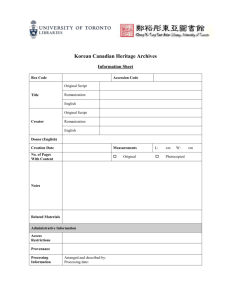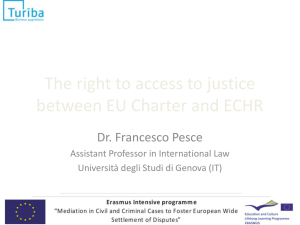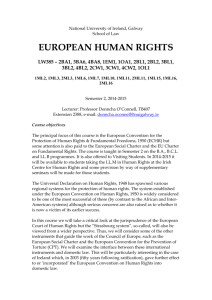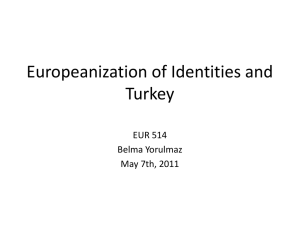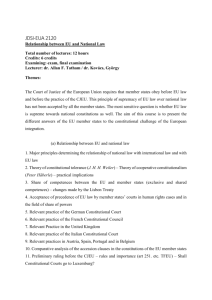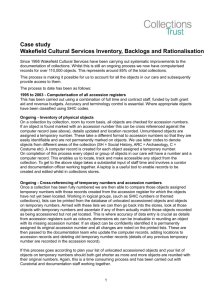Presentation (Tim Jewell)
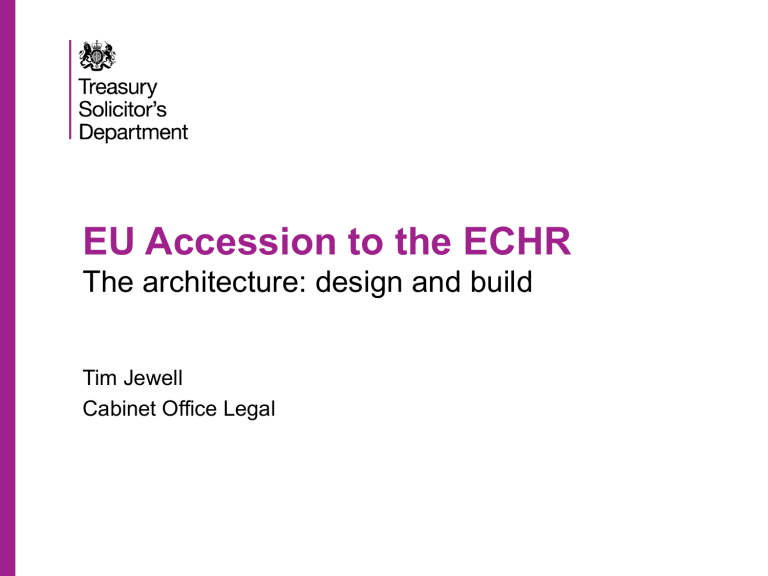
EU Accession to the ECHR
The architecture: design and build
Tim Jewell
Cabinet Office Legal
Outline
• A highly complex, multi-layered policy and legislative challenge
• Relative familiarity of each system masks an increasingly complex interplay
• Set out the basics: design, process, timing and some key issues arising on site
• Some caveats…
2
Design brief
• Art 6(2) TEU – the vision
The Union shall accede to the [ECHR]. Such accession shall not affect the
Union’s competences as defined by the Treaties.
• Protocol 14 ECHR (Art 59 ECHR)
The European Union may accede to this Convention.
• Protocol No 8 to the EU Treaties – some foundations
The [accession] agreement shall:
- make provision for preserving the specific characteristics of the Union and
Union law
- ensure that accession shall not affect the competence of the Union or the powers of the institutions
- ensure that nothing therein affects the situation of Member States in relation to the European Convention, in particular in relation to the Protocols, derogations or reservations
3
Novel design elements
(very obvious but very important)
• The CoE does much more than the ECHR
• The EU isn’t a state, it isn’t a member of the CoE, and it won’t become one
• There are 47 Parties to the Convention
• There are 28 EU Member States
• So more ECHR Parties are EU Member States than are not
• The EU has only the competence its Member States have conferred upon it
• The intention is to disturb neither the EU system nor the Convention system
• Accession requires amendment of the Convention, the Accession Agreement will become part of the Convention system
• The Agreement must secure approval by the Parties, and so approval by each
Party (including every EU Member State in accordance with its own constitutional arrangements), and EU Approval too
• EU approval requires unanimity (Art 218(8) TFEU
4
Project plan I
March 1996
Opinion 2/94: substantial change with fundamental institutional implications. Of constitutional significance going beyond (then) Art
235
1 December 2009
Treaty of Lisbon comes into force
May 2010
CoE Steering Committee for Human Rights (CDDH) commissioned to ‘elaborate’ the modalities
June 2010
That task entrusted to an informal expert group of 14 members, 7 from EU MSs and 7 not (not representing their states). Protocol 14 cif. EU Council authorises Commission to negotiate for EU
5
Project Plan II
October 2011
That group submitted draft legal instruments to CDDH
June 2012
CoM mandated CDDH to negotiate with the EU: 47+1
April 2013 draft revised instruments agreed at negotiator level
August 2013
Commission requested opinion of CJEU on whether AA compatible with
Treaties
May 2014
CJEU hearing
18 December 2014
Opinion 2/13 expected. By no means the end of the story
6
Some issues arising on site: knowns
• Accession to Protocols
• Appointment of an EU judge
• Participation by the EU in litigation, in its own right and alongside MSs – including as co-respondent
• Prior involvement of the CJEU in relation to EU law
• Allocation of responsibility for giving effect to
ECtHR judgments
• Implementation of judgments: avoiding en bloc voting
7
Unknowns
Missing piece: the EU internal rules
Ken Clarke (then LC) in 2010:
“… it will be necessary to translate concepts that are familiar when applied to states – for example, the exhaustion of domestic remedies
– to this different context. There may also be challenges relating to cases that are brought against both the EU and one of its member states. We will especially want to ensure that the EU’s accession does not have an unanticipated impact on the functioning of the [two] courts and that it is practically possible for applicants to bring proceedings to hold the EU to its obligations under the Convention in the same way they can the existing member states.”
8
Some issues
• No proposal yet
• A live issue at the hearing
• HL scrutiny committee:
– reference to CJEU before IRs ‘unexpected’
– ‘crucial inter-relationship’
– invitation to CJEU to speculate, to perform a ‘quasilegislative function ’, is incompatible with the Treaties and risks usurping the legislative process
• We’ll have to wait and see
9
